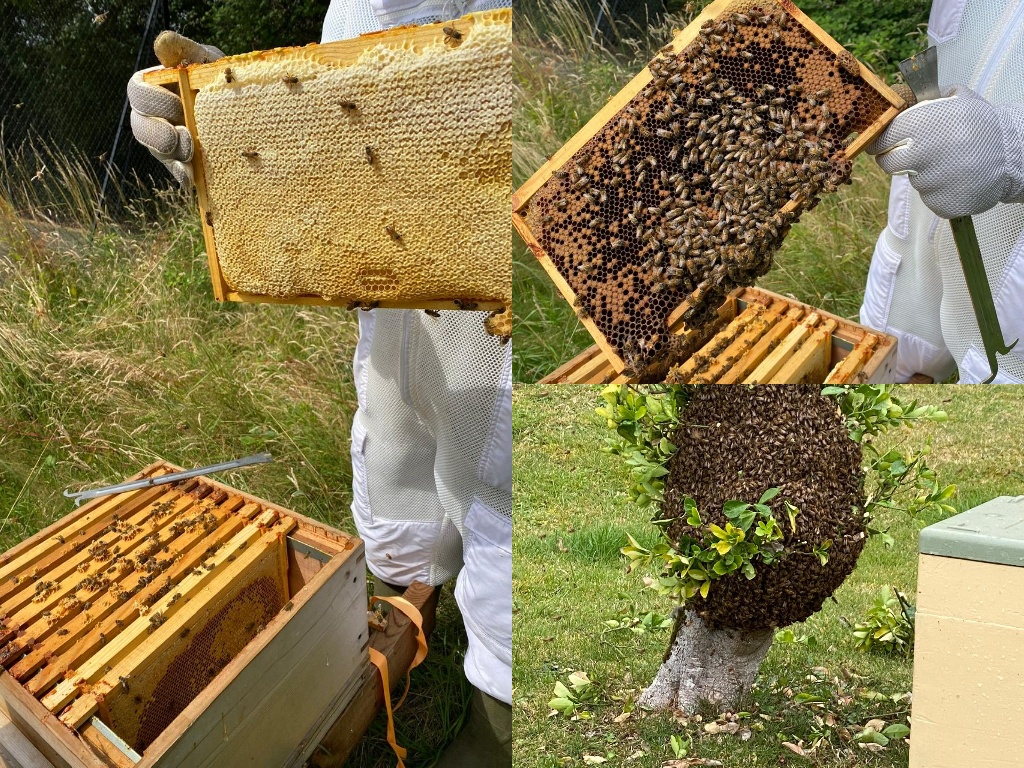What is happening in the hive?
January – The queen will be surrounded by thousands of worker bees in a cluster within the hive, there is little activity except on the odd warm day.
February – The queen is still surrounded by workers in the hive starts laying eggs.
March – On a fine day bees will start to leave the hive, while the queen increases egg laying.
April – As the weather warms up and early blossom appears bees will start collecting nectar.
May – with good weather nectar and pollen will come thick and fast, the queen will be laying at her fastest rate.
June – Honey can be removed from the hive, if high nectar flowers or crops are nearby.
July – The main nectar flow will occur during this month.
August – Colony strength begins to diminishes, outside activity reduces as nectar becomes less available.
September – Hive population continues to reduce and honey crop can be removed.
October – Bees are preparing for winter; this is an ideal time to treat them for parasites.
November/December – Bees will form a cluster around the queen and will rarely been seen outside the hive.

